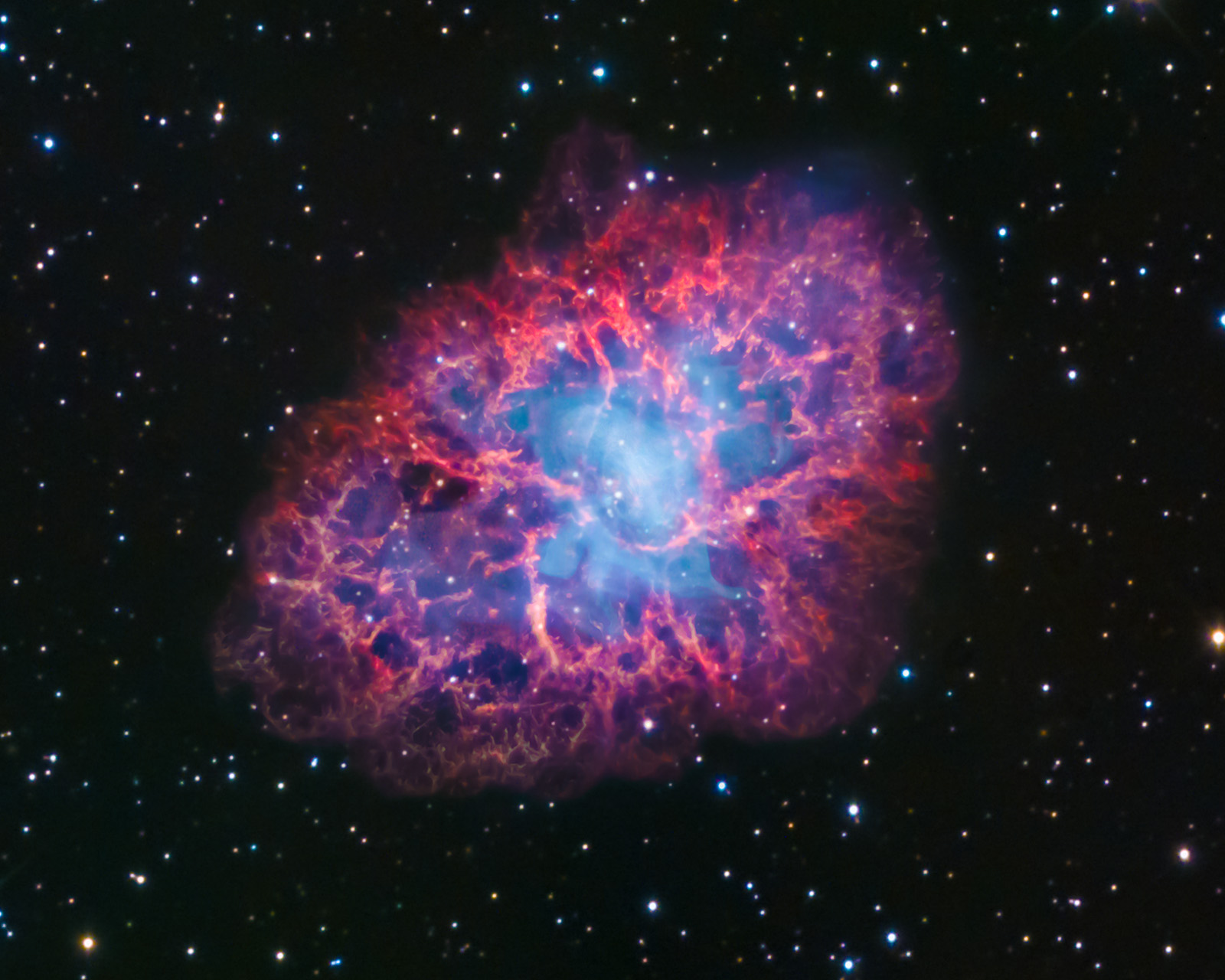About This Photograph
This is the fabulous Crab Nebula in the constellation Taurus (the Bull). This is what remains of a star that went supernova (exploded violently) in 1050 A.D. Chinese astronomers noted a "guest star" in the sky in precisely this position. When stars go supernova, they can temporarily produce more light than an entire galaxy, and this star was no exception – for weeks it was visible in broad daylight.
What remains now are glowing tendrils of gas that seem woven among a ghostly bluish glow. At the center of this cloud is the fading ember of the original star, an intriguing object with roughly the mass of our sun, but compressed to the size of a city: a neutron star. Highly magnetized, and spinning at a fantastic rate of 33 times per second, it sends out powerful radio pulses that can be picked up here on Earth. It is this same spinning motion that provides the energy that lights up the Crab Nebula.
This photograph is a composite of my own ground-based exposures taken from my backyard observatory in Austin, Texas, plus infrared, optical, and x-ray images courtesy of the Spitzer, Hubble, and Chandra space telescopes. Credit for this data:
X-ray: NASA/CXC/SAO/F.Seward
Optical: NASA/ESA/ASU/J.Hester & A.Loll
Infrared: NASA/JPL-Caltech/Univ. Minn./R.Gehrz
| 
